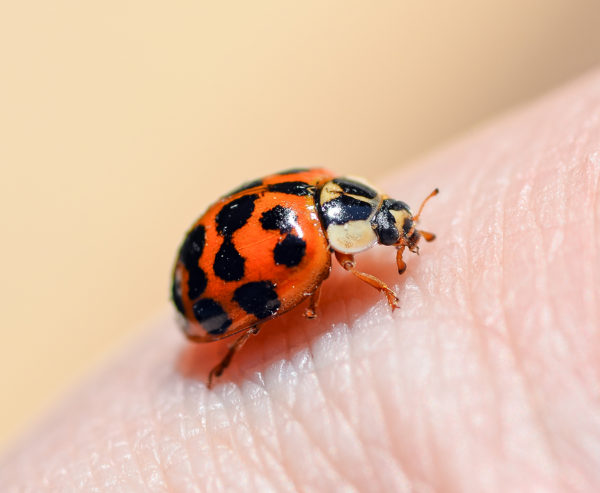READY TO GET STARTED?
REQUEST A FREE ESTIMATE
Fill out the form below or call (888) 466-7849 for a free, no-obligation estimate.

Coccinellidae is a family of beetles, known variously as ladybirds (UK, Ireland, Australia, Sri Lanka, Pakistan, South Africa, New Zealand, India, Malta, some parts of Canada and the US), or ladybugs (North America). Scientists increasingly prefer the names ladybird beetles or lady beetles as these insects are not true bugs.
Ladybugs are small insects, ranging from 1 mm to 10 mm (0.04 to 0.4 inches)
Most commonly yellow, orange, or scarlet with small black spots on their wing covers
Black legs, head and antennae
Some species mostly, or entirely, black, grey, or brown and may be difficult to recognize as ladybugs
A common myth is that the number of spots on the insect’s back indicates its age
Ladybugs are found worldwide, with over 5,000 species described, more than 450 native to North America alone
Generally considered useful insects, as many species feed on aphids or scale insects, which are pests in gardens, agricultural fields, orchards, and similar places
The harlequin ladybug was introduced into North America from Asia in 1916 to control aphids, but is now the most common species as it is out-competing many of the native species; tt has since spread to much of western Europe, reaching the UK in 2004
In the U.S., ladybugs usually begin to appear indoors in the fall – leaving their summer feeding sites in fields, forests and yards looking for a place to spend the winter
Typically when temperatures warm to the mid-60s Fahrenheit in the late afternoon, following a period of cooler weather, they will swarm onto or into buildings illuminated by the sun
Swarms of ladybugs fly to buildings in the fall depending on location and weather conditions
Homes or buildings near fields or woods are more prone to infestation
Primarily an exclusion program sealing openings into the building
Large amounts can be treated using an insect light trap indoors to capture the lady bugs in ceiling voids
Treatments can be made to void areas before the movement into the building and may help reduce the populations
We have service centers throughout Georgia, Tennessee, Alabama, and South Carolina.
M-F 7:30AM – 5:30PM
Saturday 9AM – 1PM